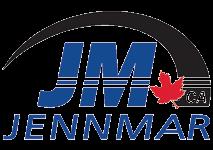Sensor-based sorting for potash operations By Rebecca Gotto and Lucinda Wood, Saskatchewan Research Council The solution A new test performed by the Saskatchewan Research Council (SRC) that combines high-resolution X-ray micro Computer Tomography (CT) with QEMScan has the ability to gather not only information about the amenability of ore to XRT sorting, but to obtain valuable information about mineralogy and optimum sensing parameters that can streamline metallurgical test work programs. To complete the test, SRC’s team conducts 3D CT scanning on potash samples to obtain volumetric information of individual mineral phases. QEMScan is then used to calibrate the greyscale values of the 3D volume, which reflects different
SRC’s Industrial CT Scanner. PHOTO PROVIDED BY SRC.
Sensor-based
sorting
is
atomic numbers of minerals in the potash sample.
becom-
through particles, not just their sur-
ing increasingly prevalent for min-
faces, to generate images of varying
This test also provides information
ing operations as a method to re-
greyscale that indicate mineralogical
relating to grain size and associated
move waste or to upgrade ore prior
differences within the particle and
X-ray attenuation coefficients, de-
to downstream hydrometallurgical
then mechanically separate them.
sired mineral presence, and infor-
ing has the potential to upgrade
A popular test currently used to
erals and clays used to later assist
feed prior to milling and hydromet-
evaluate the amenability of the ore
with developing sorting algorithms.
allurgical processes, thereby reduc-
to X-ray sorting is to simply pass
This ensures that industry can get a
ing plant footprints, tailings storage
the particles through an industrial
quick and accurate understanding of
facilities, and energy consumption.
sorter and obtain grey-scale images
whether sorting is the right technol-
However, potash projects and opera-
based on default imaging param-
ogy for their needs and have the op-
tions need to know if this technology
eters. This test provides information
timum parameters to proceed with
is appropriate, and what its optimal
on the presence of mineralogical
their metallurgical test work. This
parameters are.
differences, but it does not provide
also results in streamlined metallur-
an understanding of the actual min-
gical test work as the range of pa-
processing. Sensor-based ore sort-
The problem
eralogical composition of the ore. It
mation relating to associated min-
rameters to be tested have already been optimized beforehand.
Of all the ore sorting technologies
also does not necessarily pick up all
available, X-ray transmission (XRT)
the differences owing to its default
Industrial CT systems offer great
sorters are one of the most com-
imaging parameters, especially for
versatility and many advantages in
mon choices. That is because XRT
lesser known commodities or com-
analyzing large or dense materials,
sorters pass high-intensity X-rays
plex ores.
such as mineral containing potash,
58 PotashWorks 2021



































